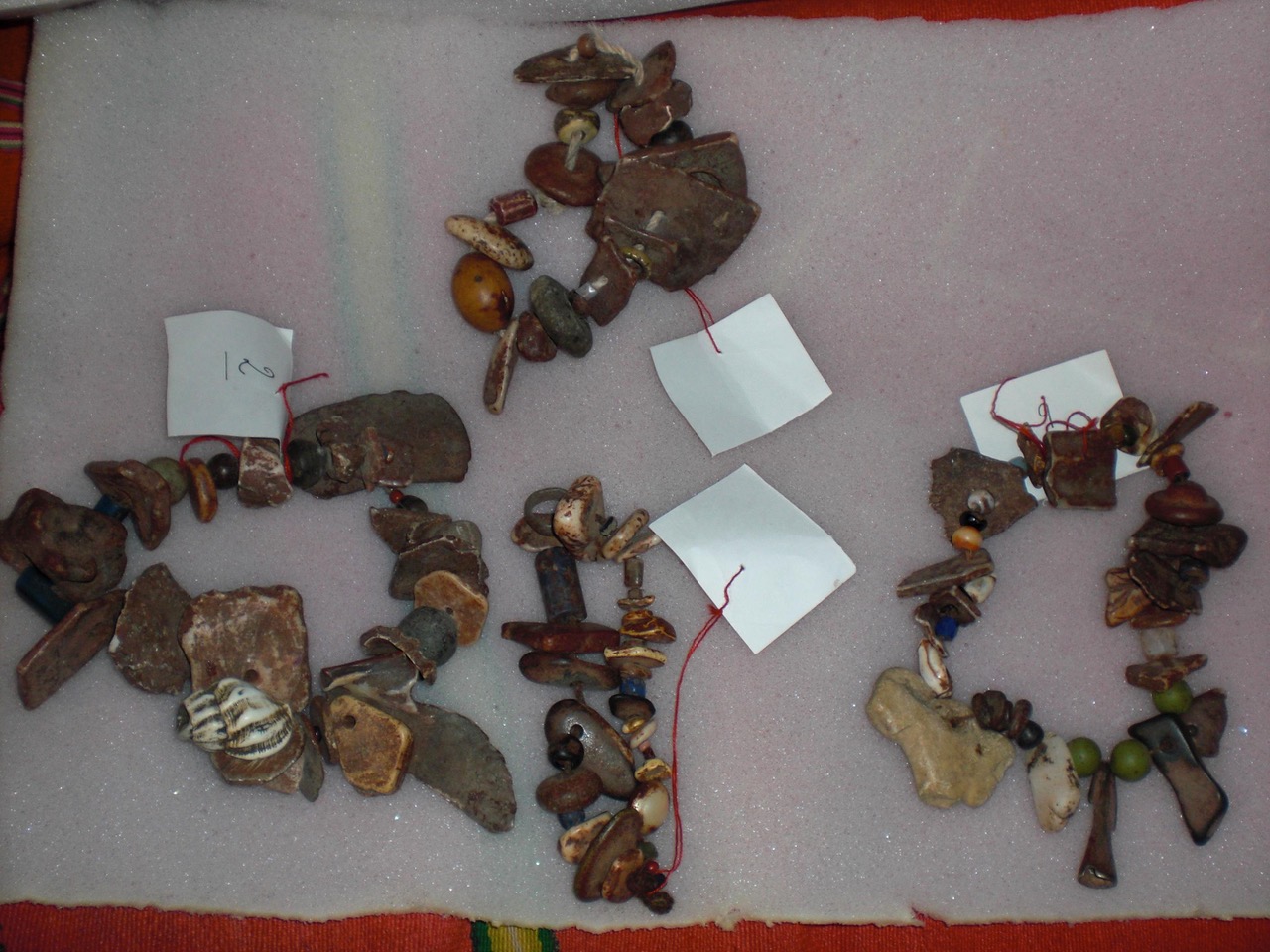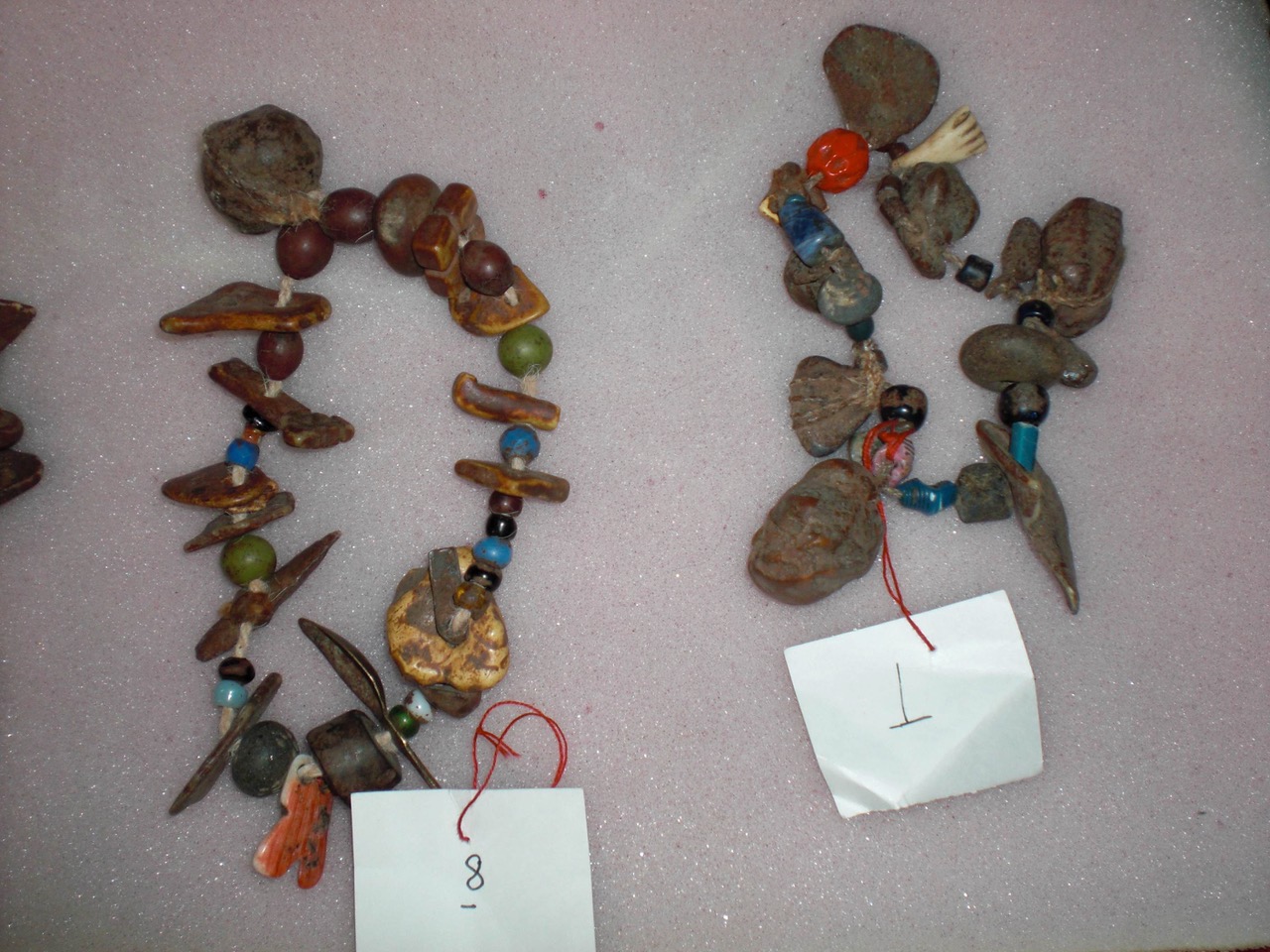

Galdr
By Paul Elliman
In Cuzco, while traveling in Peru, I was offered a collection of Quechua bracelets. Dark and bright clusters of small objects strung together. Rough stone, medicinal tree bark, metals, feathers and seeds, beads of blue lapis and apple-green jade. One of the bracelets held a tiny piece of hand-carved bone, like the fragment of a miniature Galatea.1
In Ovid’s story of Pygmalion, a collection of “shells and polished stones, beads of amber and ivory, the teardrops of the daughters of the sun,” supply a voice to Galatea, the figure carved in ivory, says Ovid, by the Cypriot sculptor.2
Although easily made, the bracelets seemed too precious to be sold. More than a fable, they were explained to me as mnemonic device, a kind of abacus. Each one, said the shopkeeper, held the stored memory of a calendar year in the life of the village they were from. The story would be recited by a village elder as a form of long song, punctuated with Quechua gesture and facial expressions, the reader sometimes losing consciousness, still humming, handling the objects, sniffing and tasting them—at which point the shopkeeper mimed licking the bracelet and spoke in Spanish, Su sabor ya es parte de tu lengua.3 Running his fingers across the parts of the bracelet he then described how all of it, including the waxy sinew it was strung on, are properties of the living world. They can, he said, or they might not want to contribute to the recovery of information contained in the bracelets. It was clear that a reading would require the full sensorium of a reader’s body.
Quechua is the main language family of the Incan Empire. After the Spanish conquest of Peru in the sixteenth century, Quechua continued to be used, remaining an essentially spoken language. In 1975 Peru became the first country to recognize Quechua as one of its official languages. In Lima, at the Museo Larco, I saw a collection of quipu, talking knots, a similar form of mnemonic recording. Based on my description, a historian at the museum told me the Cuzco artifacts are a form of galdor or galdr—a charm bracelet associated with spells, incantations, and songs.
The galdr bracelets, authentic or not, seemed to register a longevity of Quechua culture as something ongoing, alive, and present in the shards and raw chunks of the land, a living spirit of the mountains, the coral of their calendars. I asked the Cuzco shopkeeper how he had the bracelets, why was he selling them? He said that a man he knew from a nearby village had brought them for him to sell. They were made by the village quipucamayos (recordkeepers). The tribes, said the shopkeeper, are converting to Jehovah’s Witness. The bracelets are obsolete.


I thought of the beads recently while reading Peter Davidson’s study of twilight, The Last of the Light.4 Davidson’s focus is on cultural decline, a fading of light and life characterized in his book by the long-shadowed fall of the so-called Western empires. It is a classical and often drearily nostalgic theme, but one that currently weighs heavily on the collective consciousness of a so-called Great Britain. Or, as it is more often referred to today by the English themselves, ‘the country formerly known as.’ A nation that pushed forward the Industrial Revolution seems now to subsist in permanent recession. A place of memory and ruins, where even its hospital staff and care workers struggle to survive.
From an English village church the sudden call to evening prayer reminds Davidson of the ancient divisions of the day. The bell at six, the Angelus bell, registers in the changing light a shift from afternoon to evening and the ending of a day’s work. This signal to secular society of the daily hours was introduced by the conquering colonial Romans and observed in vespers, “the lighting of the lamps,” and compline, just before sleep. The church bell is now part of a time capsule preserving the human day as it was once perceived across Europe. Public time in the Middle Ages and Renaissance was communal, marked by bells and later by public sundials and clocks. The affordable pocket watch bought the last of that light, ending a shared sense of progress through the day. Following a subtle conversion of faith, time is now privatized. Shopping, rush hour traffic, music festivals, and the chanting of songs at football matches are among the very few remaining markers of a common humanity.
For Armando Andrede Tudela, thank you.
Endnotes
1. I have ten photographs, but my camera was lost in Lima the week before, these photos are from my old Nokia phone.
1. Ovid, Metamorphoses (43BC–17), translated by A.D. Melville (Oxford: Oxford University Press, 1986).
2. Its taste is already a part of your tongue
3. Peter Davidson, The Last of the Light: About Twilight (Chicago: The University of Chicago Press, 2015).
Paul Elliman is an artist based in London. His work, which follows language through many of its social and technological guises, has been exhibited internationally, including “Century City,” the inaugural exhibition for Tate Modern, London (2001), Platform, Seoul Bienniale, South Korea (2009); “Ecstatic Alphabets/Heaps of Language” at MoMA, NYC (2012); KW Institute for Contemporary Art, Berlin (2017), and the Liverpool Biennial (2018).
Also by this author: “Telephones” and “Guess Where I Am”
Read next: Diego & Me by James D. Fuson